Mastering Surface Mount Capacitors: A Comprehensive Guide to SMD/SMT Technology
Surface Mount Technology (SMT) has been an ultimate advancement in the field of electronics manufacturing, fostering a paradigm shift from traditional methods to more efficient and compact designs. This technology facilitates the direct attachment of components onto the surface of printed circuit boards (PCBs), a departure from the conventional through-hole technique where components are inserted into pre-drilled holes. This shift not only enhances the speed of manufacturing processes but also improves the performance and reliability of the final products.The use of SMT has enabled the development of smaller, faster, and more robust electronic devices by minimizing the physical footprint of components and shortening electrical pathways, thereby enhancing signal integrity and reducing susceptibility to interference. The versatility of SMT extends across various components, including resistors, capacitors, and advanced integrated circuits, making it a cornerstone in contemporary electronic design and assembly.
Catalog

Figure 1: Surface Mount Technology
Insights into Surface Mount Technology
Surface Mount Technology (SMT) has primarily reshaped how electronic devices are assembled, making the process faster, more reliable, and more efficient. In difference to older methods where components had to be placed through holes drilled in printed circuit boards (PCBs), SMT allows for components to be attached directly to the board's surface. This direct mounting technique supports the use of much smaller components, which contributes to the overall reduction in device size. At the same time, it shortens the electrical pathways, which enhances the performance of the electronics by improving signal speed and reducing potential interference.
This method doesn't just speed up the manufacturing process; it also strengthens the connections between components, making the final product more robust. As a result, SMT is now a cornerstone in the production of modern electronics, required for creating the smaller, faster, and more reliable devices we rely on today.
Core Attributes of SMD Capacitors
Surface Mount Device (SMD) capacitors play a dynamic role in Surface Mount Technology (SMT), offering significant benefits that stem from their lead-free design. These capacitors have metalized ends that simplify their placement and soldering on printed circuit boards (PCBs), which is especially noteworthy for automated production processes. This design allows for precise and efficient assembly, a necessity in modern electronics manufacturing.
Their small size allows for more components to be packed onto a single PCB, which is main to producing smaller and more advanced electronic devices. In addition, the shorter electrical pathways in SMD capacitors reduce unwanted inductance, improving their electrical performance and making them more efficient in transmitting signals.
Economically, SMD capacitors are advantageous because they can be produced in large quantities at a lower cost, taking full advantage of economies of scale. This cost-effectiveness, combined with their ease of assembly and compact design, makes SMD capacitors a preferred component in electronic circuitry today.
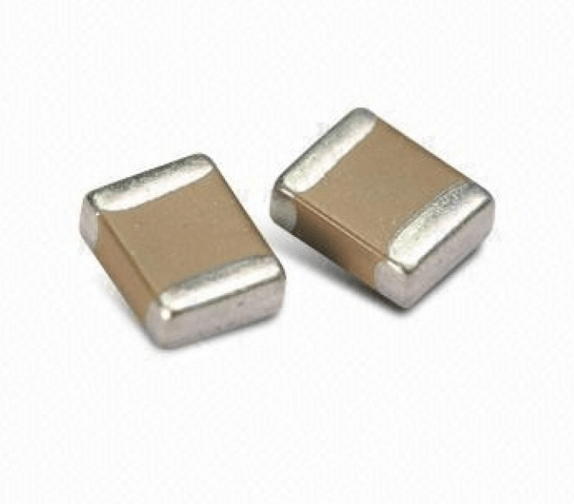
Figure 2: Multilayer Ceramic SMD Capacitors
Role of Multilayer Ceramic SMD Capacitors in Modern Electronics
Multilayer Ceramic SMD (MLCC) capacitors are useful in modern electronics, accounting for a large share of the SMD capacitor market. These capacitors are constructed from ceramic dielectric materials, which are layered with thin metal electrodes. This design allows for high capacitance in a compact form, making them ideal for a wide range of electronic applications.
MLCCs come in various sizes, tailored to different technological requirements. The larger 1812 models, measuring 4.6 x 3.0 mm, are used in applications where space is less constrained, while the tiny 0201 models, at just 0.6 x 0.3 mm, are perfect for highly compact devices.
The production of MLCCs involves several careful steps. First, the ceramic material is prepared by mixing and processing raw materials into a fine powder. This powder is then formed into layers, with metal electrodes applied between each layer. The layers are then pressed together and co-fired at high temperatures. This co-firing process not only solidifies the structure but also enhances the capacitor's durability, ensuring it performs consistently across a range of temperatures and environmental conditions. By combining compact size, high capacitance, and robust performance, MLCCs have become a cornerstone in the design and manufacture of modern electronic devices.
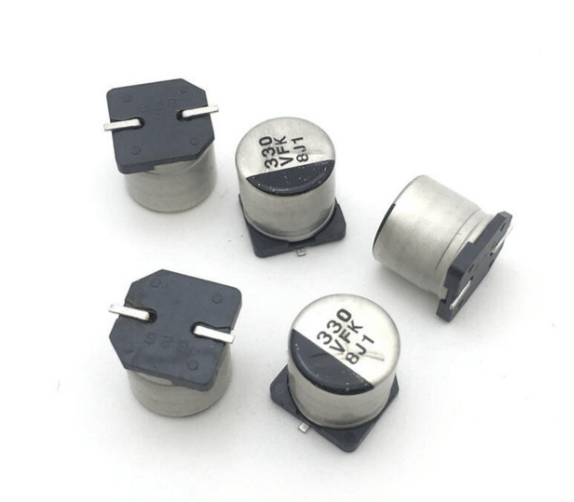
Figure 3: SMD Electrolytic Capacitors
The Importance of SMD Electrolytic Capacitors
SMD electrolytic capacitors are increasingly preferred in electronic circuits for their high capacitance and cost efficiency. These capacitors are marked with either direct capacitance values in microfarads (µF) or with a coding system that includes both capacitance and voltage ratings. For instance, a capacitor labeled "33 6V" indicates 33 µF capacitance with a 6-volt rating. Alternatively, a code like "G106" signifies 10 µF at 4 volts.
The compact design of SMD electrolytic capacitors makes them beneficial in electronic designs where space is tight, yet high capacitance is needed. Their straightforward labeling system simplifies identification and ensures accurate placement in circuits. This combination of space efficiency, high performance, and easy identification makes these capacitors a reliable choice in modern electronic designs.
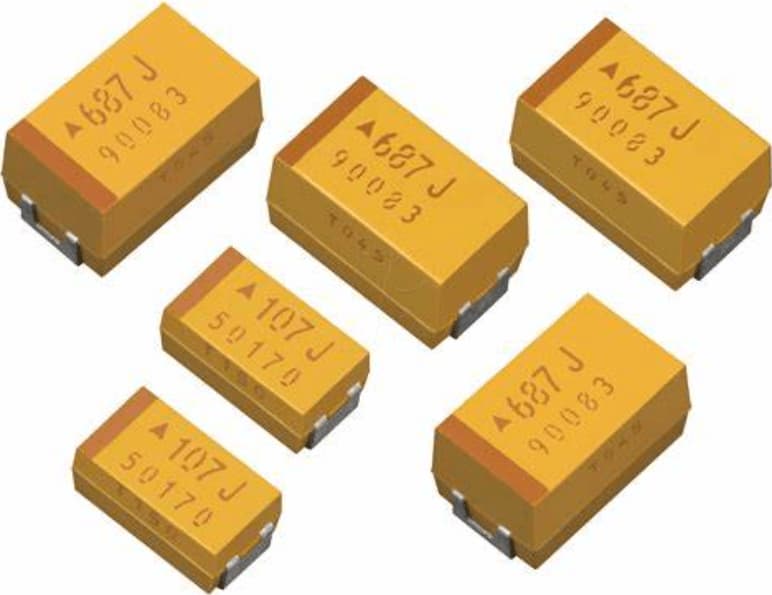
Figure 4: SMD Tantalum Capacitors
Characteristics of SMD Tantalum Capacitors
SMD tantalum capacitors are basic in electronic designs where high capacitance is required, especially in situations where ceramic capacitors fall short. These capacitors come in standardized sizes, such as the EIA 3216-18 (commonly known as Size A), ensuring compatibility with a wide range of circuit designs. Tantalum capacitors have long been favored for their ability to handle high-capacitance needs in SMD applications, particularly because they can withstand the intense heat generated during soldering processes.
Although SMD electrolytic capacitors have gained traction, tantalum capacitors remain a preferred choice in applications that demand exceptional reliability and performance. Their durability under high temperatures and consistent performance make them requisite in specialized scenarios where other capacitor types may not suffice.
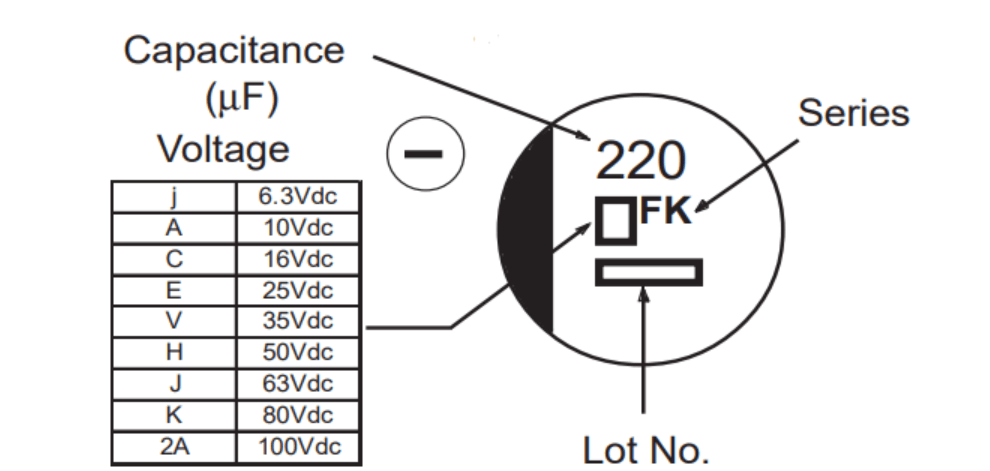
Figure 5: SMD Capacitor Markings
Decoding SMD Capacitor Markings
Due to limited space on their casings, SMD capacitors typically don't display their capacitance values in plain text. Instead, they use a three-digit code to convey this information. The first two digits of the code indicate the significant figures of the capacitance, while the third digit tells you the number of zeros to add, acting as a multiplier.
This coding system is basic for the accurate identification of capacitors during the manufacturing process. Technicians must be well-versed in reading these codes to ensure that the correct capacitors are used in the assembly, maintaining the integrity and quality of the final product. Proper interpretation of these markings is a serious step in avoiding errors that could affect the performance of electronic devices.

Figure 6: Differences Between SMT and SMD
Differences Between SMT and SMD
In electronics manufacturing, analyzing the difference between Surface Mount Technology (SMT) and Surface Mount Devices (SMD) is perilous. This distinction influences both the design and production processes, shaping how electronic devices are created and assembled.
Surface Mount Technology (SMT): is the process used to design and assemble electronic circuits by placing and soldering components directly onto the surface of printed circuit boards (PCBs). This method streamlines the assembly process, allowing for the creation of more intricate and compact designs. SMT has revolutionized electronics manufacturing by enabling the mounting of components on both sides of a PCB, leading to smaller, faster, and more efficient circuits. This is particularly noteworthy for devices where space is limited and performance is dominant. Key techniques in SMT include applying solder paste through stencils, placing components with precision, and using reflow soldering to secure them. In some cases, wave soldering is also utilized. The precision and accuracy of these steps are influential in maintaining high production quality and efficiency.
Surface Mount Device (SMD): refers to the actual components that are mounted onto the PCB during the SMT process. These components include resistors, capacitors, and integrated circuits, all designed specifically for surface mounting. SMDs differ from traditional through-hole components in that they have short pins or pads instead of long leads. These shorter connections are directly soldered onto the PCB surface, reducing space and improving electrical performance. SMDs are available in a wide range of types, each tailored to meet specific electrical and mechanical requirements
Evaluating SMD Capacitors
Evaluating SMD capacitors involves understanding their benefits in modern electronics and effectively addressing their challenges to ensure optimal performance. This evaluation is settling for integrating these components into advanced electronic devices.
Advantages of SMD Capacitors
These capacitors have a small footprint, which allows for high-density circuit designs. This compactness is beneficial in creating miniaturized devices like smartphones and medical implants, where space is at a premium. SMD capacitors can be placed on circuit boards using automated processes, which reduces assembly costs and speeds up production, making them a cost-effective option. Their proximity to other components on the board enhances frequency response and overall electrical performance, making them ideal for high-speed and high-frequency applications.
Challenges with SMD Capacitors
Due to their small size, SMD capacitors are particularly prone to damage from electrostatic discharge, which can impair their performance or even cause failure. The tiny dimensions of these capacitors can make manual handling and rework difficult, requiring precision tools and skilled technicians to manage them effectively.
• Strategies for Mitigation
Implementing strict electrostatic discharge (ESD) control measures, such as using anti-static mats and ESD-safe workstations, can help protect SMD capacitors during handling and assembly. Investing in high-precision pick-and-place machines and other specialized equipment can enhance the accuracy of placement and reduce the risk of damaging these delicate components. Continuously improving manufacturing processes, such as by using optical inspection systems to monitor the placement and solder quality in real-time, can significantly reduce the likelihood of defects and improve overall product quality.
Regularly testing for capacitance, leakage current, and breakdown voltage ensures that each capacitor meets the needed performance standards. These tests simulate long-term environmental conditions to evaluate the durability and reliability of capacitors over time.
Strategic Utilization of SMT Components
In the realm of modern electronics manufacturing, Surface-Mount Technology (SMT) components are core. They enable the creation of high-density, compact circuits, optimizing space and managing heat effectively—dominant factors in the design of today's sophisticated electronic devices.
|
Strategic Utilization of SMT
Components |
|
|
Design Flexibility and Miniaturization |
SMT components are beneficial for
designing complex, miniaturized circuits. This technology is particularly
valuable in sectors like consumer electronics, medical devices, and
aerospace, where the trend is toward increasingly smaller, lighter, and more
versatile products. By mounting components directly onto the surface of
printed circuit boards (PCBs), SMT reduces the overall footprint, allowing
for the development of slim, compact devices that are dominant to modern
technology. |
|
Improved Electrical and Thermal
Performance |
SMT components excel in high-power and
high-frequency applications, outperforming their through-hole counterparts in
these areas. This makes them demand for industries like telecommunications
and computing, where maintaining signal integrity and thermal stability is
dynamic. The compact arrangement of SMT components also enhances
electromagnetic compatibility (EMC) and reduces signal interference, ensuring
reliable performance in tightly packed circuit designs. |
|
Enhanced Manufacturing Processes |
SMT components significantly enhance
manufacturing efficiency. Automated assembly lines can place these components
quickly and with high precision, leading to faster production times and
reduced labor costs. Automation also decreases the likelihood of errors
during assembly, resulting in higher quality and more reliable electronics |
|
Cost-Effectiveness |
While the upfront costs of setting up SMT
manufacturing can be steep, the long-term benefits are clear. SMT allows for
placing components on both sides of the PCB, reducing the number of boards
needed and lowering overall material costs. In addition, the process
generates less waste and uses materials more efficiently, leading to ongoing
cost savings. |
|
Sustainability and Environmental
Impact |
The compact nature of SMT components
reduces the raw materials needed for PCBs, and the smaller final products
consume less energy and produce less waste during use. The efficiency of the
SMT process also contributes to lowering the carbon footprint of manufacturing
operations, making it a more sustainable option. |
Types of Surface Mount Components
Surface Mount Technology (SMT) has revolutionized the way electronic components are connected to printed circuit boards (PCBs). Instead of the older method, where components are inserted into drilled holes, SMT allows components—known as Surface Mount Devices (SMDs)—to be directly attached to the PCB surface. This method not only speeds up assembly but also increases the density of components on the board, making electronic devices more complex and functional.

Figure 7: Surface Mount Resistors
Resistors are useful for controlling electrical currents within circuits. They come with color codes or printed values that indicate their resistance levels, allowing for precise current regulation.
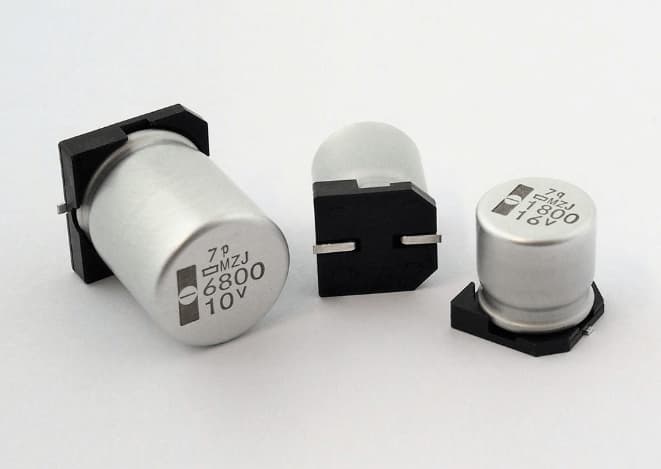
Figure 8: Surface Mount Capacitors
Capacitors are used to store and release energy in a circuit. Available in types like ceramic, tantalum, and electrolytic, each capacitor is selected based on the specific energy storage needs and stability requirements of the circuit.

Figure 9: Surface Mount Inductors
Inductors store energy in a magnetic field and are influential in applications like filtering systems, oscillators, and power supplies. They help maintain a steady current flow and ensure signal integrity.
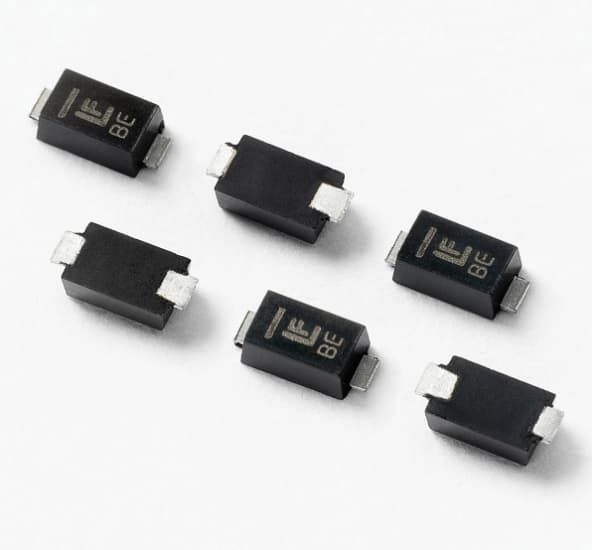
Figure 10: Surface Mount Diodes
Diodes are used to direct the flow of current in one direction, which is important for rectification and signal modulation tasks within circuits.

Figure 11: Surface Mount Transistors
Transistors, including NPN, PNP, MOSFETs, and JFETs, are dynamic for signal amplification and switching functions, serving as the backbone of both simple and advanced electronic circuits.

Figure 12: Integrated Circuits (ICs)
Integrated Circuits, or microchips, pack multiple components onto a single chip to perform complex operations, powering a wide array of devices such as computers and smartphones.
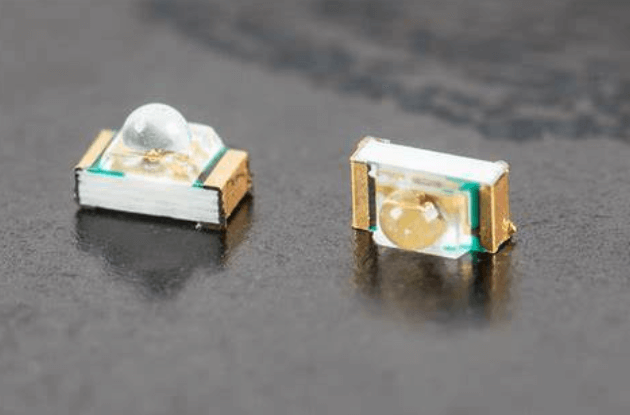
Figure 13: Surface Mount LEDs
LEDs are efficient at converting electrical energy into light and are a key component in modern display technologies.
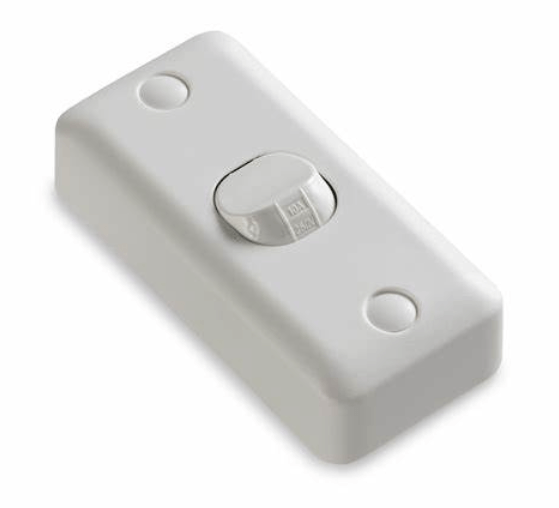
Figure 14: Surface Mount Switches and Connectors
These components include tactile switches and various connectivity ports that ensure reliable digital and analog connections in electronic devices.
Conclusion
In the end, Surface Mount Technology (SMT) maximizes both design flexibility and production efficiency, marking a substantial advancement in the electronics manufacturing industry. This technology enables the assembly of more complex and reliable devices while reducing both the size and cost of electronic components. SMT's ability to support the mounting of components on both sides of a PCB has revolutionized the design of modern electronic devices, making it possible to achieve higher density and improved performance in smaller footprints. The continuous advancements in SMT, such as improvements in capacitor materials and electrode designs, promise even greater miniaturization and functionality in future electronic devices.
As the electronics industry continues to evolve towards more sophisticated and compact devices, SMT will remain at the forefront, driving innovations and enhancing the capabilities of electronic devices in various sectors including consumer electronics, medical technology, and aerospace.
Frequently Asked Questions [FAQ]
1. What is a surface mount capacitor?
A surface mount capacitor is a type of electronic capacitor designed to be mounted directly onto the surface of printed circuit boards (PCBs). These capacitors are small and do not have traditional wire leads; instead, they have terminals that solder directly to the PCB.
2. How to read surface mount capacitors?
Reading the values on surface mount capacitors involves looking at the alphanumeric codes printed on them. Typically, a three-digit code is used: the first two digits represent the capacitor's value, and the third digit indicates the number of zeros to follow. For example, a capacitor marked "104" would represent 10 followed by 4 zeros, equating to 100,000 picofarads or 100 nanofarads.
3. How to read the SMD component?
To read an SMD (Surface Mount Device) component, check for a marking code on its surface. This code can include numbers and letters, which denote its specific characteristics like resistance, capacitance, or other values. For resistors, the code usually follows a similar format to capacitors, where the first two characters indicate the significant digits and the last character the multiplier. Some SMD components also use a letter to denote tolerance or other specifications.
4. What is the difference between SMD and SMT capacitors?
The terms SMD (Surface Mount Device) and SMT (Surface Mount Technology) refer to different aspects of the same technology. SMD describes the components themselves, such as capacitors, that are designed for surface mounting. SMT, on the other hand, refers to the method or process used to mount these components onto circuit boards. Therefore, an SMT capacitor is simply a capacitor applied using surface mount technology.
5. What does SMD stand for in surface mount?
In the context of surface mounting, SMD stands for Surface Mount Device. This term categorizes all types of electronic components, including capacitors, resistors, and integrated circuits, that are designed to be mounted directly onto the surface of PCBs using SMT (Surface Mount Technology).